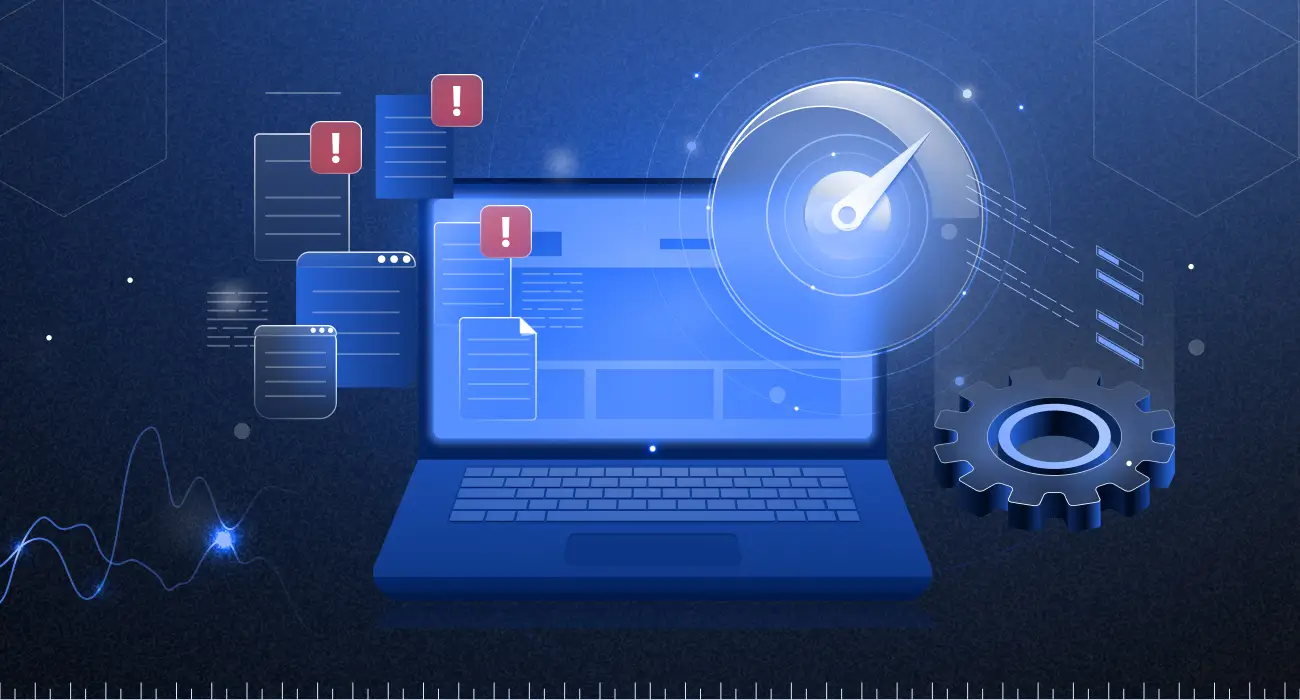Imagine your store being flooded with thousands of calls and customer walk-ins. Would you and your team be overwhelmed and want to take a pause?
Your website goes through something similar when Black Friday sales season kicks in. On the busiest shopping day of the year in the 2022 holiday season, there was a 47% surge in website traffic compared to the average daily traffic during that season.
Specifically, Black Friday witnessed three times the usual traffic seen on a standard day in October 2022.
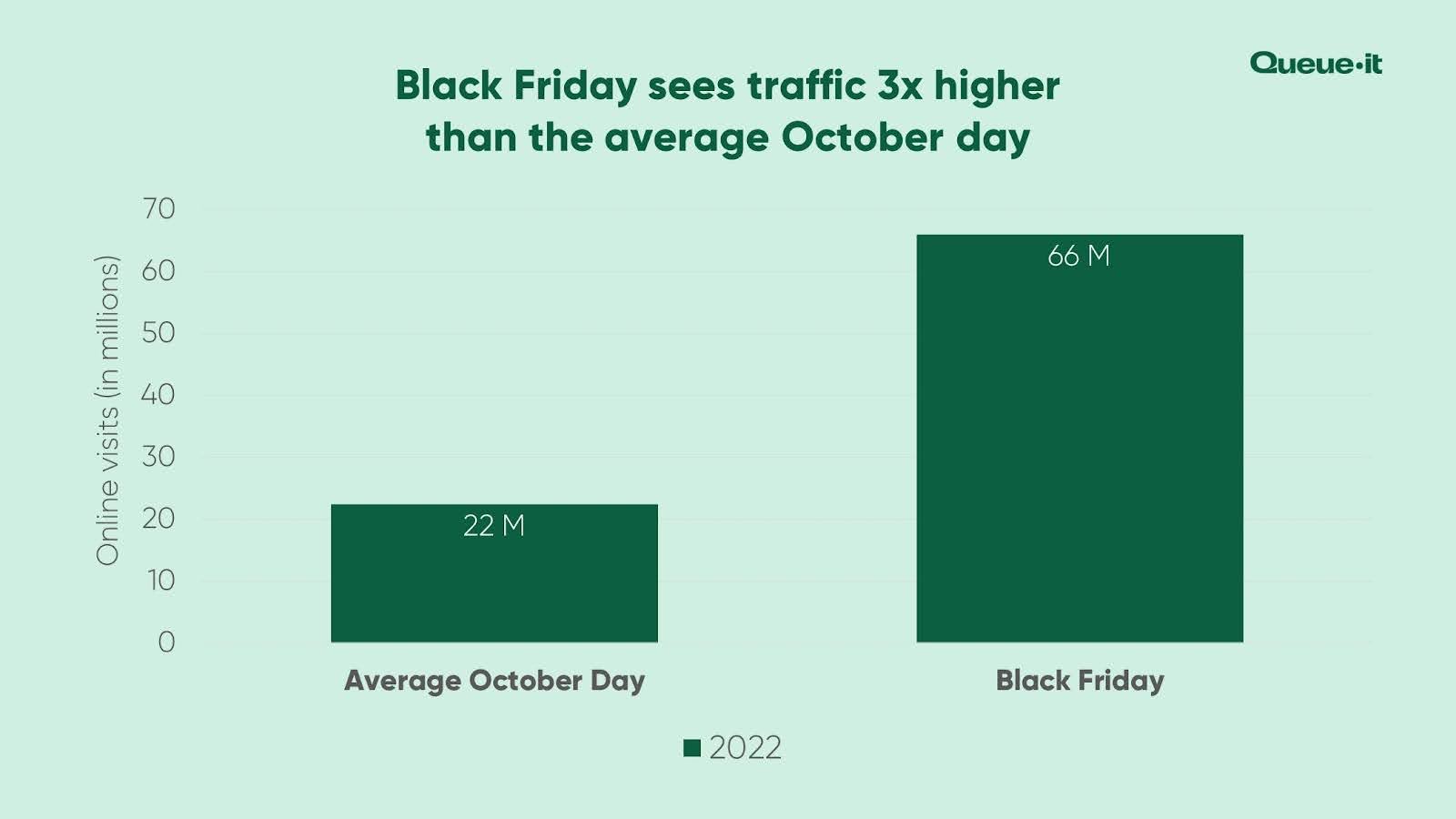
Navigating the digital rush of Black Friday requires a robust website. A seamless experience can lead to record-breaking sales, while downtime risks revenue and customer trust.
This guide outlines key strategies to ensure your website remains resilient during the shopping frenzy.
Establish Proper Observability Practices For Peak Loads
To keep your website strong during the Black Friday rush, it’s crucial to watch its performance closely. For this, you need to start planning well in advance.
For this, the first step is to anticipate the spike in traffic during these mega-events. Observability practices are the first step to establishing a roadmap for peak loads.
Observability is the process of gaining deep insights into how your website operates, both under normal circumstances and during periods of heightened demand. This includes monitoring crucial metrics such as server response times, error rates, and overall system health.
Moreover, it includes monitoring and alerting for potential risks and implementing processes to mitigate any detected risks.
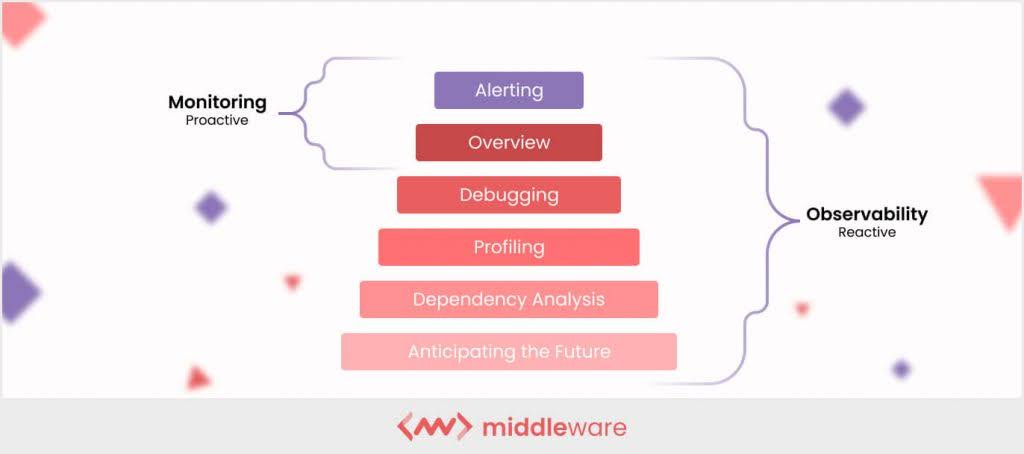
By peering into the heart of your system, you can identify potential bottlenecks and weak points that may otherwise go unnoticed.
Establish Synthetic Monitoring To Understand the Effect On Users
Once you have observability practices in place, you will need to focus on the monitoring aspect of it.
To ensure a seamless and satisfying experience for users navigating your website during peak loads, it’s imperative to go beyond conventional monitoring and embrace synthetic monitoring.
What is Synthetic Monitoring?
Synthetic monitoring is a proactive approach that involves simulating user interactions with your website through automated scripts. These scripts replicate common user journeys, allowing you to proactively assess your website’s performance from a user’s perspective.
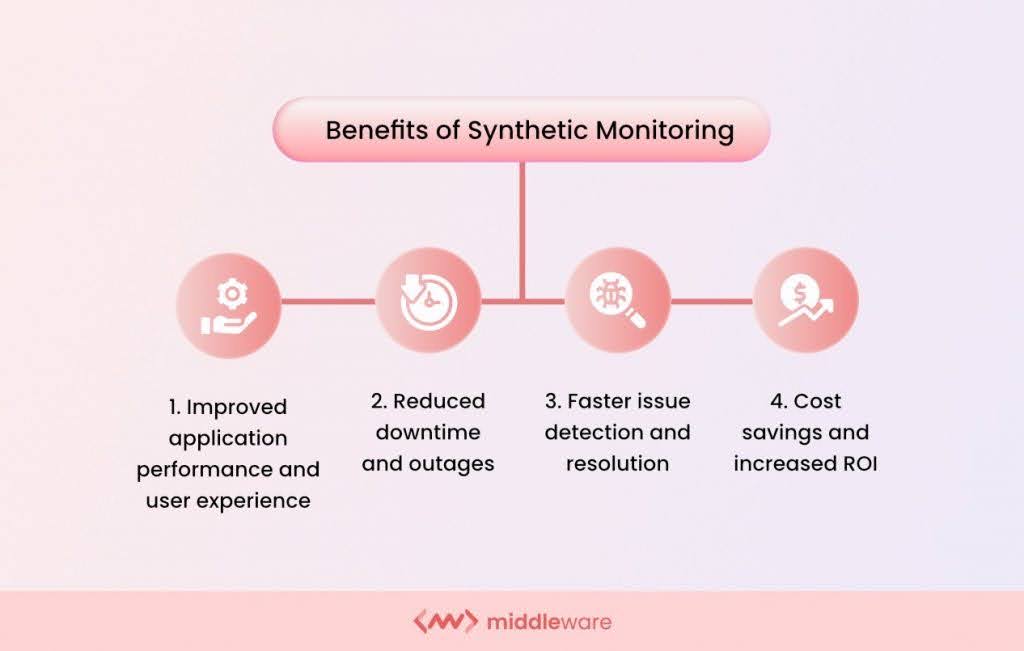
Implementing Synthetic Monitoring helps:
- Identify users’ key paths on your website, including product searches, adding items to the cart, and completing transactions.
- Select metrics that align with user experience, such as page load times, transaction completion rates, and server response times.
- Establish a Monitoring Schedule and tests to be well-prepared for an anticipated surge in traffic, especially leading up to Black Friday and other holidays.
Unlike traditional monitoring methods, which rely on real user data, synthetic monitoring provides a controlled environment for understanding how your website behaves under various conditions.
Proactively Monitor Sites with Test Loads Prior to Black Friday
One of the key steps in synthetic monitoring is stress testing. Stress testing involves intentionally subjecting your website to simulated loads that surpass normal operating conditions.
The goal is to identify the breaking points and weaknesses in your system before they become critical issues during peak traffic periods.
To derive maximum benefit and address identified issues, it’s crucial to conduct stress tests well in advance of Black Friday. This allows your team sufficient time to analyze results, implement optimizations, and retest the system to ensure the desired improvements have been achieved.
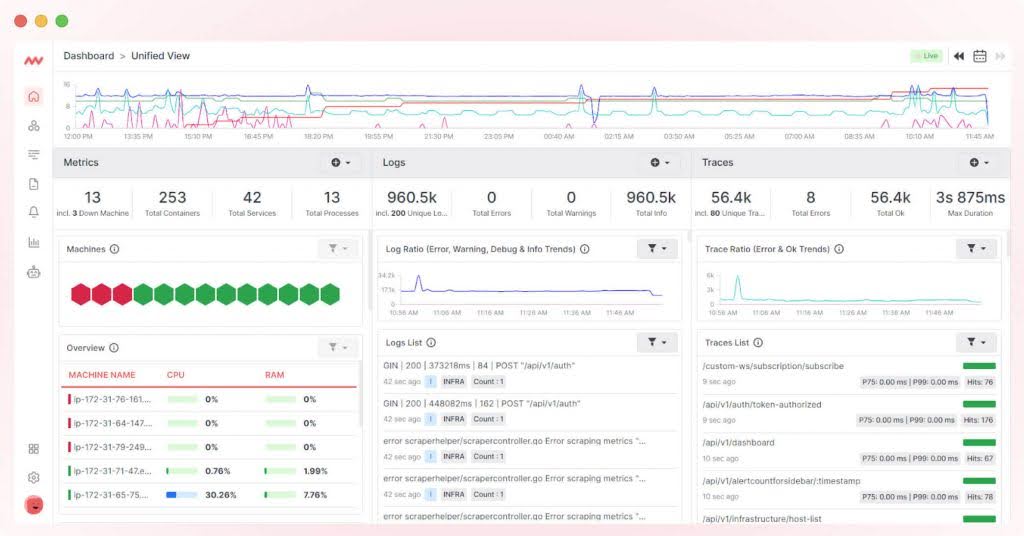
For this, you may use website performance monitoring tools to assist you in tracking and optimizing your website’s performance.
Middleware is an end-to-end AI-powered observability platform that you can consider.
It specializes in complex, multi-tiered applications and can even help you perform tests on your website to track the performance of web pages and APIs for different metrics.
Taking Inventory of Performance Culprits
Once you have synthetic monitoring tools and practices in place, you will get a detailed report on the culprits that can damage your website’s performance.
Take inventory of performance culprits on your website, especially in preparation for high-traffic events like Black Friday.
Common Culprits that can Slow Down your Website
- Heavy Image Sizes and Animations: Oversized images can significantly slow down page load times. According to Google, images should be optimized and properly formatted, which can save up to 50% in file size without compromising quality.
- JavaScript and CSS Files: Uncompressed JavaScript and CSS files can lead to increased load times. Tools like Fast Velocity Minify can reduce HTTP requests by merging and minifying these files, potentially improving load times by up to 20%.
- Cache Files: Caching can greatly improve your site’s Time to First Byte (TTFB). With Edge Cache, for example, you can serve page cache directly from the closest server to a site’s visitors, which can enhance performance metrics significantly.
More Best Practices to Consider
- Enabling Content Delivery Network (CDN): A CDN can distribute the load, save bandwidth, and improve users’ access speed. As per the Pressable knowledge base, enabling CDN can be a crucial step in troubleshooting website performance issues.
- Updating Themes and Plugins: Outdated themes and plugins not only pose security risks but can also slow down your website. Keeping them updated can improve response times and overall site performance.
- Use Performance Analysis Tools: Tools like GTMetrix and WebPageTest provide detailed insights into what might be affecting the load time of your site. For instance, an ideal TTFB should be 0.50 seconds or less, as recommended by WebPageTest.
- Optimize for Mobile: With mobile traffic accounting for approximately half of the web traffic worldwide, having a responsive design is crucial. Google emphasizes mobile-first indexing, making it imperative to ensure your site performs well on mobile devices.
- Regularly Disable and Test Plugins: Plugins can often be the cause of slow loading times. Disabling them and testing site speed can help identify problematic plugins. Remember to back up your database before performing such tests.
- Monitor and Optimize Database Performance: Regular database optimization can prevent slow query times, which are common performance issues. Indexing and regular cleanups can significantly improve database response times.
- Assess Server Capacity: Ensure your hosting solution can handle traffic spikes. For example, cloud hosting solutions should offer scalability to manage sudden increases in traffic without performance degradation.
- Review Security Measures: Security features, while essential, can impact site speed. Efficient SSL/TLS protocols, for example, can reduce handshake times and improve load times.
By addressing these areas and implementing recommended practices, you can mitigate potential performance issues and ensure your website is prepared for the increased traffic during Black Friday sales.
Mapping Out Incident Response Practices
Mapping out team practices to handle incidents is a critical aspect of IT incident management. Here’s a structured approach based on best practices and recent data:
Pre-Incident Preparation
According to the Uptime Institute’s 2022 Outage Analysis report, a well-thought-out incident management plan is essential, as 20% of companies have experienced a serious incident in the past three years. The incident management plan should be documented and practiced before it’s needed to mitigate risks effectively.
Incident Detection and Analysis
Incorporating Service Level Agreements (SLAs) and Service Level Objectives (SLOs) can be invaluable in detecting incidents early. Metrics-driven detection is crucial for rapid discovery and resolution.
Communication Strategy
Establish dedicated communication channels and maintain an up-to-date list of essential contacts to minimize confusion during an incident.
Post-Incident Analysis
Conduct detailed discussions post-incident to evaluate what worked and what didn’t. This helps in refining the incident management plan for future incidents.
Continuous Improvement
Schedule mock incidents to ensure the team is familiar with the incident response plan. This practice helps in identifying and smoothing out any rough spots in the plan.
Tooling and Infrastructure
Implement observability tools and platforms like Middleware to find and fix incidents quickly. Ensure that tools are regularly reevaluated as part of the incident management plan.
By following these steps and incorporating the provided data, organizations can create a robust framework to handle incidents effectively, reducing the potential impact on operations and reputation.
Using Observability for Security
Using observability to detect runtime vulnerabilities and cyberattacks involves a multi-faceted approach that leverages modern technology and best practices. Here’s how to structure this process, along with relevant data and sources:
Establish Comprehensive Observability
Implement real-time monitoring to detect anomalies as they occur. According to Dynatrace, 79% of CISOs believe that continuous runtime vulnerability management integrated with observability is key to addressing security gaps.
Integrate Security within Observability Platforms
Security observability tools that create Runtime SBOMs (Software Bill of Materials) can automatically detect which libraries are actively used by applications, helping to pinpoint vulnerabilities.
Leverage AI and Automation
Utilize AI Observability tools, like Middleware, to analyze information in real-time, which can significantly speed up the response to cyber threats. Forbes notes that organizations using AI for real-time analysis can adapt more quickly and thrive.
Prioritize and Remediate Vulnerabilities
Adopting dynamic observability can lead to an 85% reduction in noise because it helps prioritize vulnerabilities that are actually exploitable, as reported by The New Stack.
Continuous Improvement and Adaptation
Continuously update and improve security measures based on observability data. PwC’s survey indicates that 96% of organizations have experienced business disruption since 2021, highlighting the need for constant vigilance and improvement.
By integrating these practices into your observability framework, you can create a robust system for detecting and responding to runtime vulnerabilities and cyberattacks, thereby enhancing your website’s security posture, especially during critical periods like Black Friday.
Closing Summary
As Black Friday approaches, the stakes are higher than ever for online retailers gearing up to meet the demands of an influx of eager shoppers.
In this guide, we’ve explored essential strategies to fortify your website against potential outages and ensure a seamless experience for users during the holiday rush.
To ensure Black Friday becomes a dream sales day, leverage Middleware’s capabilities, such as:
- Real-time monitoring to catch issues instantly, preventing prolonged downtime.
- AI-Based Insights to predict and address potential outages before they affect users.
- Centralized Data Analysis: With Middleware, all telemetry data is in one place, simplifying analysis and response.
- Proactive Alerts: Set up alerts that notify you immediately of any system anomalies to tackle issues promptly.
- Security Observability: The platform’s security features help detect vulnerabilities, keeping customer data safe during the sales rush.
- Scalability: Middleware scales with your traffic, handling Black Friday surges without a hitch.
By integrating Middleware, businesses can not only anticipate and mitigate risks but also ensure smooth, secure, and successful Black Friday sales.
For more details, sign up on our platform to see it in action!


